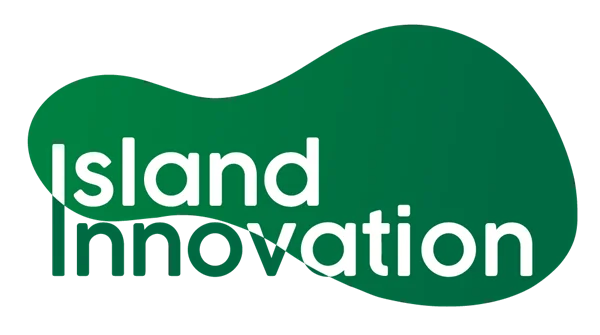Image: National Oceanic and Atmospheric Administration – NOAA
If you have paid even the slightest amount of attention to the yearly United Nations climate summits (COPs) over the past few years, odds are you have heard of Loss & Damage, or L&D, being a key negotiation point. But what is it exactly, and why is it dominating the conversations ahead of COP28 in Dubai later this month?
How We Got Here
To understand the conversation around Loss & Damage, it helps to go back a few years to the first Intergovernmental Panel on Climate Change (IPCC) report in 1992. The IPCC is a body composed of scientists and experts in climate science chosen by all UN member states to take stock of the climate, how it is changing, the causes behind it, and provide some suggestions for solutions. Their findings and recommendations are meant to be the technical and scientific basis for international climate policy. In their first report, the IPCC noted that low-lying atoll nations were vulnerable to climate change – pointing directly to sea-level rise and an increase in severe weather events as key issues exacerbated by buring fossil fuels.
Island nations and coastal communities were among the first populations highlighted as being vulnerable to the climate crisis, and while the IPCC has continued to produce increasingly alarming reports about climate impacts and the narrowing window for action, the urgency has not always been so evident at the more politically-focused COPs. Delegations from vulnerable communities have grown more vocal at each successive COP and as the effects of climate change became more pronounced. This eventually came to a head at COP15 in Copenhagen in 2009 when tense negotiations on emissions limitations saw major economies disregard the call by vulnerable nations to limit warming by 1.5°C by the end of the century. Despite the inclusion of this limit as the lower boundary in the 2015 Paris Agreement signed at COP21, it has illustrated the inherently unequal status quo of international politics.
Register free for our Island Voices @ COP28 platform to receive exclusive access to daily news updates from our team on the ground.
While the past decade has seen more concerted efforts by major economies to tackle climate change, broken promises on financial assistance for developing countries and questionable policy choices have continued to mar the proceedings. The complicated political posturing on the global stage was contrasted by increasing climate impacts affecting a growing number of communities, leading to a now-iconic address by Barbados Prime Minister Mia Mottley at the COP26 opening in Glasgow, where she stated: “Our people are watching and taking note. On finance, we are 20 billion dollars short of the 100 [billion pledged] and this commitment might only be met in 2023. On adaptation – adaptation finance remains only 25 % – not the 50:50 split needed given the heating that is already taking place. Climate finance to frontline SIDS declined by 25% in 2019. Failure to provide this critical finance and that of loss and damage is measured in lives and livelihoods being lost in our communities. It is immoral and unjust.”
A Palpable Shift
At the time of Prime Minister Mottley’s address, Loss & Damage had not developed past a policy working group with a clear ideology: providing financial support for communities that have experienced loss of life and damage to infrastructure due to climate change. Many climate vulnerable countries lack the ability to both continue developing their economies and adapt to the effects of climate change, an injustice compounded by the fact that these communities are not responsible for the crisis. As such, Loss & Damage is meant to be a mechanism that unlocks financing to help rebuild and increase resilience in vulnerable countries – providing another pathway to mitigation and adaptation. The financial backing behind the fund would be provided by major economies with a larger responsibility for, and capacity to act on, climate change.
Loss & Damage has become a rallying call for those on the frontline of climate change and became an agenda point at COP27 in Sharm el-Sheikh, where it emerged from negotiations as a new body to be implemented in international policy. The details around the Loss & Damage Fund are meant to be finalized and presented in Dubai, including the internal processes, the controlling body, and how the finance would be sourced – all of which have created some strain through 2023.
In negotiations earlier this year, it was decided that the World Bank would manage the fund despite what developing countries described as an unfair advantage for major economies. The World Bank’s presidents are appointed by the United States, and the U.S. is among the major economies expected to finance the fund. Mistrust between developed and developing economies increased following the U.S.’ statement following funding negotiations that it was disappointed that participation in Loss & Damage would not be “voluntary”, on the other hand, the European Union has announced a major financial package to support L&D, showcasing a growing willingness to take comprehensive action on climate. This, in tandem with public demand for sustainable development, the increasing involvement of activists, and strong voices of impacted communities at events like COP, is making it harder for inequalities to stand.
It is for this reason that Loss & Damage is considered a key agenda item this year. Not only is it a needed piece of legislation capable of helping millions of people and providing assistance for adaptation and mitigation programmes in vulnerable communities – but it also represents a symbolic shift in how international climate policy has been run. While plenty of work remains to be done to ensure we reach our climate goals without compromising the safety and future of vulnerable communities, there has been a palpable shift in the way that these issues are being discussed. Will this be reflected at the negotiating table? Let’s find out at COP28.





